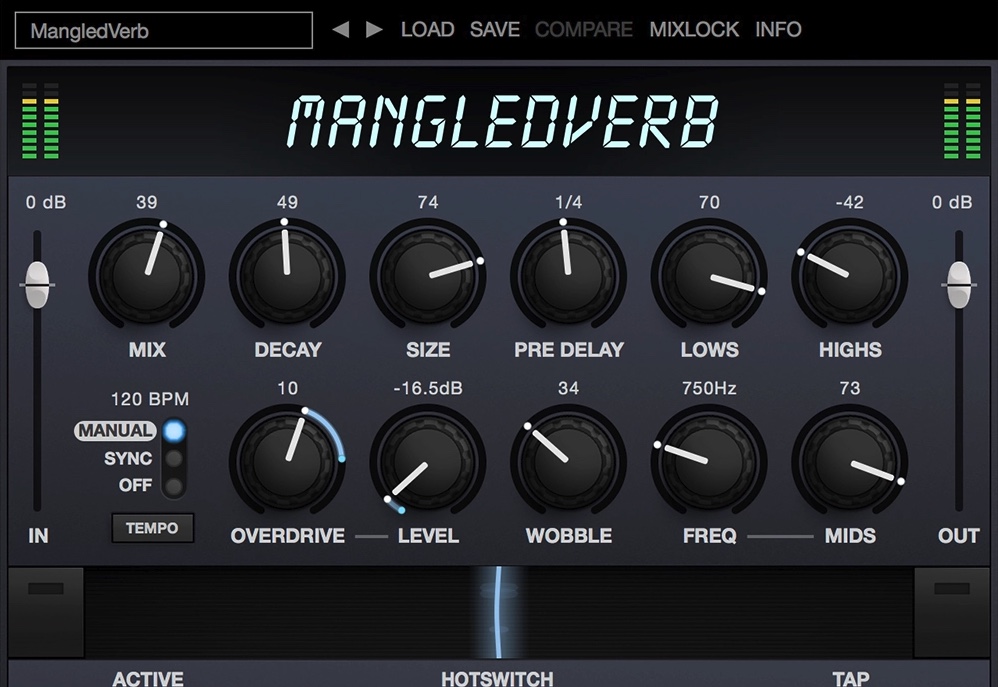
Clicking and holding the Hotswitch until it blinks allows the user to then change settings on any or all of the controls to create a second configuration of Spring that can then be quickly toggled between by subsequent clicks of the switch. Finally, there is a Modulation control that adds a spacious chorus-type effect to the overall output of Spring, and a Resonance knob to control the level of metallic resonance on the High damping.Īt the bottom of the UI are the aforementioned Tap button, an Active button for bypassing the plug-in, and between them, the Hotswitch. This is ingenious, and at extreme settings can really turn Spring into an effects powerhouse. With the tremolo set to Post, the mix affects the blend between the fully dry input signal, and the output of the spring being fed through the tremolo. When the tremolo is pre-spring, the Mix knob blends between the spring output and the tremolo being applied to the dry input signal. The overall Mix knob is state-variable based on the Tremolo position.
Set the hotswitch on h9 in control manual#
There's also a Manual setting for tempo, where the plug-in's tempo will follow taps on the Tap button at the bottom of the UI. Sync mode will also turn the spring Decay value to follow the tempo so your reverbs can decay musically. The tremolo has Intensity and Speed controls, as well as a switch to place it pre- or post-reverb – try switching the order of those on your ol' Fender Deluxe Reverb amp! The speed can be set in Hertz, or when the Tempo control on the UI is switched to Sync, it will be set to a musical note value locked to the tempo of your DAW project. High and Low Damp controls set the corner frequencies where simple but effective tone shaping will occur. Eventide has modeled their springs to have a maximum available time of 20 seconds I'm not aware of any physical spring that could generate an output that long! This also means the plug-in can be used for sound design, and for other purposes I don't think any spring reverb designers originally envisioned their spring tanks being used.

Tension controls how taut the springs are in the tank. The more springs, the more complex and dense the reverb will be. There are two sizes of spring "tanks" to choose from (Small and Large), as well as the number of springs in each, variable between one and three. This brings two high-quality spring reverb algorithms with some deep parameter editing and morphing capability to the DAW, and they also toss in an extremely useful tremolo as part of this plug-in. While spring reverbs may be best known as the province of guitar amps and surf music, AKG's BX-5, -10 and -20, MicMix Master Room reverbs, and Demeter's RV-1D among others, all proved that a well-implemented spring reverb absolutely had a place in the studio environment.Įventide has now ported their Spring reverb algorithm from the H9 (generally thought of as a guitar pedal, although it can be so much more) over to iOS and AU/VST/AAX. They tend to mostly appear within guitar amp sims, but less often as standalone plug-ins.

The one category of reverbs that always seems under-represented in the plug-in sphere (at least to me!) are springs.

More rooms, halls, plates, and cathedrals than most of us can use in a lifetime.

These days, we have more reverbs than ever before in our various DAWs, all available under our fingertips (trackball tips? mouse tips?!?) whenever we want them.


 0 kommentar(er)
0 kommentar(er)
